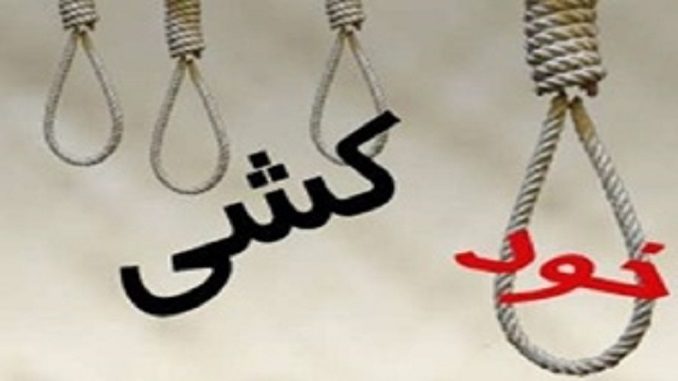
The increasing trend of suicide among different classes and in all age groups and Increase in group suicides, has become a humanitarian catastrophe in Iran. The victims of most of these suicides are in the country’s deprived western and southern provinces, such as Ilam, Kermanshah, Lorestan, Hamedan and Khuzestan, and mostly being women and the young, including even 13 year olds.
“Suicide in Iran has strangely increases. From 2011 to 2015 suicides have increased 66% amongst women and 71% amongst men. For years suicide statistics have not been provided to the media as they should and the entities involved mostly refuse to do so. Suicides amongst the youths are also very high,” according to the state-run Khabar Online website.
Considering the fact that for every suicide death, 60 suicides end in the victim surviving (state-run Youth Journalists Club – 17 Jan 2016), one can imagine the horrifying scope of this social disaster.
On Monday, December 25th in Iran a 40-year old mother threw her 10-year-old daughter off the fifth floor of a building and went on to commit suicide with her three-month old baby. This shocking event in Rezvan Shahr of Gilan province, northern Iran, left the mother and her baby dead, and the locals utterly devastated in shock.
Also on Monday, a 12-year-old student in Houweyzeh city, northwest of Ahwaz capital, committed suicide after being punished by a Persian teacher on Monday the 25th of December 2017.
Reliable source reported to Ahwazi Centre for Human Rights (ACHR) that the student named Elias Sharifi who was studying in the city of Khafajiya (Susangerd) and was punished by a Persian teacher on Monday morning to write more homework than usual, committed suicide after returning to his home and by using his mother’s scarf and passed away.
Two days prior to this unfortunate event, Iranian officials reported 16 suicides in the span of 40 days following the recent earthquake in western Iran, and the increasing rate of suicides in this part of the country. Prior to the quake Kermanshah province registered 23 suicides amongst 1,000 people, being five times the country’s average.
On December 6th reports indicate four young girls committing suicide in Mashhad, northeast Iran. This followed the suicide of two 15-year-old girls in the town of Malak Shahi.
On November 4th a 13-year-old girl hanged herself shortly after her mother committed suicide. Prior to this, small town of Mazandaran province, northern Iran was shaken on October 10th when a father committed suicide along with his wife and two daughters by setting the entire family ablaze.
Suicide numbers amongst women double those of men, according to state-run media outlets. Furthermore, 40% of all suicides involve self-emulation and are acts of protests. Currently in Iran under the mullahs’ rule, women have the highest number of self-emulations in the Middle East, reports Jahan-e San’at daily.
The shocking scope of suicides in Iran, especially the concerning escalation of group suicides, are the result of 38 years of the mullahs’ despotic rule, providing the Iranian people with nothing but crackdown, torture and execution, parallel to poverty, corruption, unemployment, prostitution, drug addiction
